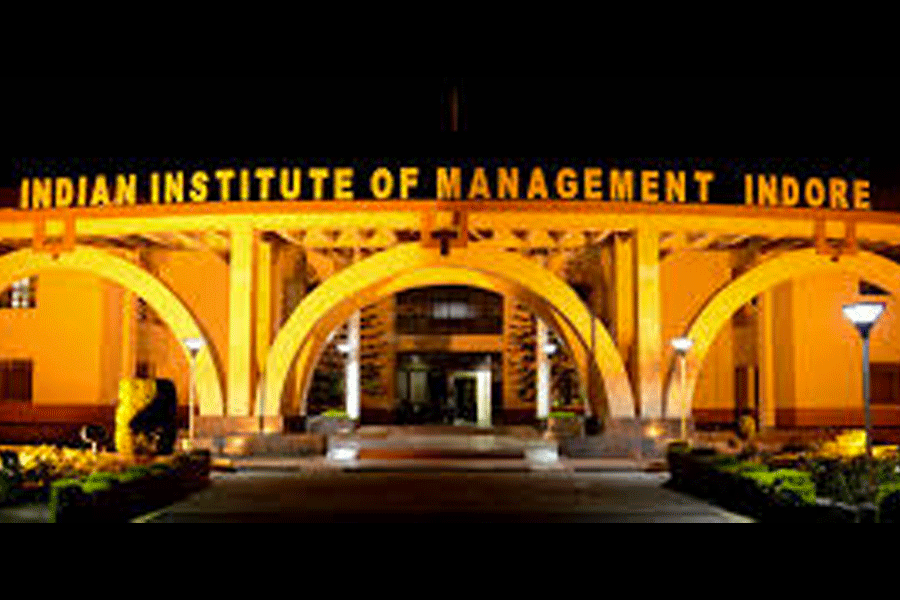New Delhi, Nov. 29: A team of Indian biologists has deciphered a shape-driven, lock-and-key type interaction between a protein and genetic material that they say could help explain a rare but incurable nerve cell disease called amyotropic lateral sclerosis.
It's the disease that has confined celebrated British physicist Stephen Hawking to a wheelchair for decades.
Scientists at the International Centre for Genetic Engineering and Biotechnology, New Delhi, have shown that a protein named TAF15 expressed in nerve cells and implicated in amyotropic lateral sclerosis (ALS) attaches itself to ribonucleic acid through complementary shaped molecular structures.
"This protein-RNA interaction depends exclusively on the shapes of the two molecules - it is somewhat similar to how a cork fits into a champagne bottle," said Neel Sarovar Bhavesh, a structural biologist at the New Delhi centre who led the research study.
Scientists do not know what triggers ALS, a progressive and usually fatal neurological disease in which nerve cells that direct the movement of voluntary muscles such as the arms, legs and the face suffer damage leading to muscle weakness and loss of movement control.
A US National Institutes of Health document on the disorder says most ALS patients die from respiratory failure within about five years after diagnosis, but about 10 per cent of ALS patients survive 10 years or longer.
Hawking is one of the few exceptions, having already lived for more than half a century after being diagnosed with ALS in his early 20s.
Neurologist John Landers at the University of Massachusetts Medical School in the US and his colleagues have implicated mutations in several genes, including TAF15, in familial or inherited ALS. But scientists estimate that the genetic cause of 50 per cent of ALS remains unknown.
In the new study, Bhavesh and his colleagues examined experimentally the molecular handshake between TAF15 protein and a complementary RNA molecule in nerve cells.
Through a mix of lab work and computer-based studies, they have shown that the concave-shaped face of the TAF-15 protein is the primary binding zone that interacts with the convex-shaped structure of the molecular sequence of the RNA.
"But if there's a mutation in the TAF15 protein, it can't bind properly to the RNA. This sets off a cascade of genetic and biochemical events leading to misfolding of other proteins in the nerve cells," Bhavesh said. "This may be an underlying mechanism for the cell degeneration in ALS."
Bhavesh and his fellow research scholars at the New Delhi centre, Maruthi Kashyap and Akshay Ganguly, have published their findings in the journal Scientific Reports. Their study is being viewed as an advance towards understanding the molecular basis of neuromuscular disease progression.
"This work could be an important step towards identifying molecular targets for possible therapy in the future," said Ramakrishna Vijayacharya Hosur, a senior structural biologist at the Tata Institute of Fundamental Research, Mumbai, who was not associated with the study.
There is currently no cure for ALS, but doctors prescribe medications and physical therapy to relieve the disorder's symptoms such as fatigue, muscle cramps and difficulty in speech to improve the quality of life for patients.
A study at the All India Institute of Medical Sciences, New Delhi, of 119 patients suspected to have ALS over a five-year period has indicated that the average age of onset of the disease is 41 years for men and 48 years for women. Only six of the 119 patients had familial or inherited ALS.
"Awareness of ALS has improved the chance of appropriate diagnosis," Vinay Goyal, professor of neurology at the AIIMS, who was a member of the team that studied the 119 ALS patients, told The Telegraph.
"Diagnosis helps patients and their families prepare themselves - but certain other neurological disorders can mimic the early symptoms of ALS, so it is important to refrain from diagnosis until we're absolutely sure it is ALS."











